Posted by Teresa on December 23, 2010 under Housing Trends, Landlord Paperwork and Forms, Tenant Credit Checks | 
 Short-term leases are becoming more popular in some areas of the country. One trend is that homeowners who sell a home are less willing to buy right away, so while they wait and see what the market will bring, they rent for a while. Another factor is the toll the economic crisis took on renters’ credit scores. Landlords are less willing to take chances on one-year leases, so often a month-to month or six-month lease is a great option.
Short-term leases are becoming more popular in some areas of the country. One trend is that homeowners who sell a home are less willing to buy right away, so while they wait and see what the market will bring, they rent for a while. Another factor is the toll the economic crisis took on renters’ credit scores. Landlords are less willing to take chances on one-year leases, so often a month-to month or six-month lease is a great option.
When the economy and job market are both doing well, the ideal situation for a landlord is a one-year lease with a strong tenant. But even though the rental markets across the country are starting to show improvement, many landlords are far from the ideal—and they still need to fill rental units.
When credit scores are less than perfect, and home sellers are knocking on your door, looking for short-term leases, it makes sense to adjust your lease terms from one-year to six-month or month-to-month.
Month-to-month leases mean that at the end of any month, the tenant can simply move—or the landlord can end the lease. Most leases require notice on each side, but if neither side ends the lease, it continues for another month.
7 Advantages of Short-term Leases:
- Your rental units could be occupied instead of empty
- Improved cash flow
- Possibility of higher rent negotiation
- Easier transition between tenants (less clean-up and maintenance)
- Larger pool of possible tenants
- You can get rid of a bad tenant more quickly
- For month-to-month leases, the rent can be adjusted at any time
Remember, no matter what the length of the lease, proper tenant screening is the most important step you can take prior to signing it. Conduct a thorough tenant credit check and background check and you’ll feel better about offering a lease to short-term tenants.
Posted by Teresa on December 16, 2010 under Housing Trends, Landlord Tips | 
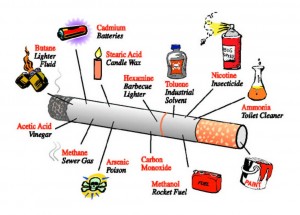 A new study in Pediatrics suggests that children living in apartment buildings are at higher risk of exposure to passive smoke than children living in detached houses. Experts say that components of tobacco smoke that are harmful to children can seep through apartment walls, then be absorbed by furniture, curtains, clothing and carpet. This makes vulnerable children unable to avoid exposure.
A new study in Pediatrics suggests that children living in apartment buildings are at higher risk of exposure to passive smoke than children living in detached houses. Experts say that components of tobacco smoke that are harmful to children can seep through apartment walls, then be absorbed by furniture, curtains, clothing and carpet. This makes vulnerable children unable to avoid exposure.
The study focused on 5,000 children who live in smoke-free households, including detached houses, duplexes and apartment buildings. Researchers looked for cotinine, a product of nicotine and a highly sensitive marker for tobacco, in the children’s blood. The study found that overall, 73% of the kids were exposed to tobacco. Of children who live in apartment buildings, 84.5% had cotinine levels indicating tobacco exposure, while only 70.3% of children living in detached homes did. For children in semi-attached or duplex homes, the figure was 79.6%.
These numbers suggest that no matter where they live, children have no control over second-hand smoke. But in apartment buildings, the chance of exposure is much higher than for kids in detached homes. No matter who is smoking, even if they are in an apartment on the next floor or down the hall, the chemicals and carcinogens travel through ventilation systems, shared walls and ductwork.
Other findings were that tobacco contaminants were highest in children under 12, those who are black and those who live below the poverty level. While parental smoking is the most common source of secondhand smoke exposure, the new study shows that parents even the children of nonsmoking are exposed to these harmful substances.
While it’s too early to know what ramifications studies like this will have on legislation, it’s not too far outside the realm of possibility to imagine that rental property owners who allow smoking in their units could, at some point, be held responsible for damages to non-smokers’ health. In a perfect world, no one would be exposed to others’ harmful habits—especially children who have absolutely no choice in the matter. Until then, rental property owners can convert their properties to smoke-free housing. This study could be the most compelling reason to do so ever.
Posted by Teresa on November 24, 2010 under Housing Trends | 
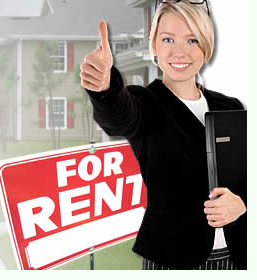 According to a report on CNNMoney.com, home builders had a terrible month in October, with new home sales falling 80% from the top of the boom five years ago. Commerce Department figures show sales dropped to an annual pace of just 283,000, down 8.1% from September.
According to a report on CNNMoney.com, home builders had a terrible month in October, with new home sales falling 80% from the top of the boom five years ago. Commerce Department figures show sales dropped to an annual pace of just 283,000, down 8.1% from September.
Last October, the annualized sales rate was 430,000. This year’s figure represents a whopping 28.5% decline from 12 months ago. Experts had predicted 2010 sales in October to be around 314,000—and were surprised by the dismal showing.
The peak pace was set in July 2005, at 1.4 million sales, and despite attractive mortgage rates, sales remain sluggish as 2010 comes to a close. The total number of homes on the market has dropped 20% since October, 2009.
First-time buyers were more likely to jump into homeownership, without the burden of selling an existing home. Getting a mortgage is still a challenge, and many potential buyers are unable to obtain financing.
The chief economist for the National Association of Home Builders (NAHB) blames the lower home sales figures on a drop in the number of people forming households. Unemployment and the slow economy mean people are staying at home with their parents longer, moving in with friends, or not getting married.
Individuals who cannot get financing to buy a home, and those unwilling to risk taking on a long-term situation like homeownership in this shaky economy will continue to turn to the rental market. For many, renting continues to be a more viable option—especially with shorter-term leases. Landlords are responding by becoming more flexible with six-month or even month-to-month leases to accommodate changing needs.
Posted by Teresa on October 15, 2010 under Housing Trends | 
 Smokers are getting used to resisting the urge to light up in bars, restaurants, ball parks and offices. Some cities are considering extending smoking bans to beaches and public parks, too. But generally, smokers can retreat to their homes and indulge as much as they’d like—but this too is becoming a thing of the past.
Smokers are getting used to resisting the urge to light up in bars, restaurants, ball parks and offices. Some cities are considering extending smoking bans to beaches and public parks, too. But generally, smokers can retreat to their homes and indulge as much as they’d like—but this too is becoming a thing of the past.
More rental properties are enforcing no-smoking policies. Tenants are hearing they can be evicted for lighting up. Rental property owners are concerned—not about the smoker’s health, typically—but about the affect of secondhand smoke on non-smokers.
The Related Companies, a development firm with 17 apartment buildings in Manhattan, instituted smoking bans in some of them a year ago. Smoking tenants who already live in the buildings will be allowed to continue, but new tenants must promise to not smoke at home.
Other developers and property management companies have extended smoking bans to common areas, such as sidewalks leading to apartment buildings, private patios and shared terraces.
Across the U.S., the Department of Housing and Urban Development (HUD) is encouraging public housing agencies to ban smoking in all or some of their units. Corpus Christi, TX, Richmond, CA and Snohomish County, WA have instituted non-smoking policies. The intent is to keep tenants safe from second-hand smoke, reduce the danger of fires, and save money on clean up when smokers vacate rental units.
Some landlords have made the decision to not pressure or force smoking tenants to vacate their properties. While there are no laws that prohibit landlords from banning smoking, courts have ruled for tenants who broke their leases because of the landlord’s failure to protect them from second-hand smoke.
The overall trend seems to be toward non-smoking buildings. Perhaps the future will include two kinds of apartment buildings: “smoking ok” and “no smoking allowed.”
Posted by Teresa on October 1, 2010 under Housing Trends, Landlord Tips | 
Appliances
Remember avocado ranges and harvest gold refrigerators? They’re not that crazy compared to appliances from the 40s and 50s, when baby blue, turquoise and pink were once considered fashionable in the kitchen.
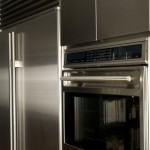 Color trends come and go, but it looks like stainless steel appliances are here to stay. Tenants love that stainless goes with any kitchen color scheme, always looks clean, and blends into the room. And when viewing a rental property, tenants really respond to stainless steel. Investing a bit more in stainless steel appliances can mean the difference between a signed lease and a great tenant walking away.
Color trends come and go, but it looks like stainless steel appliances are here to stay. Tenants love that stainless goes with any kitchen color scheme, always looks clean, and blends into the room. And when viewing a rental property, tenants really respond to stainless steel. Investing a bit more in stainless steel appliances can mean the difference between a signed lease and a great tenant walking away.
It’s also important for all the appliances to match. A black refrigerator, almond stove and white dishwasher just don’t look good together—which is fine if your potential tenants don’t care about how things look. But wouldn’t you rather appeal to tenants who care about appearances? It’s usually a sign they like to keep things looking good and will take better care of your rental property. And if you don’t care how things look in your rental property, what is that saying about you as a landlord?
High efficiency, “green” appliances are also becoming more popular. When replacing appliances in your rental units, look for the Energy Star accreditation. Potential tenants will be impressed that they’ll save money on energy bills. Besides, they’re better for the environment.
Bathroom Flooring
For bathrooms, the #1 worst idea is carpeting. Moisture, mold, and crawly things love hiding in carpet fibers. If you have carpeting in a rental unit bathroom, rip it out and replace it with something easy to keep clean and sanitary, like ceramic tile.
Some of the new engineered woods are also good choices because they are moisture-resistant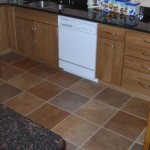 and tough. Stone tiles can be slippery—and they’re expensive. Ceramic is cheaper, and looks fantastic. Another good choice is sheet or tile vinyl. It looks good, is inexpensive, and easy to clean. Keep in mind vinyl won’t be as desirable to some tenants as ceramic tile.
and tough. Stone tiles can be slippery—and they’re expensive. Ceramic is cheaper, and looks fantastic. Another good choice is sheet or tile vinyl. It looks good, is inexpensive, and easy to clean. Keep in mind vinyl won’t be as desirable to some tenants as ceramic tile.
Kitchen Countertops
Where ceramic tile is preferred by many tenants for bathroom floors, it’s not the best choice for kitchen counters. Not only is it difficult to install, it’s a bear to keep clean. The grout will chip and fill with crumbs and water. It also needs resealing or it will crumble. With the abuse some tenants can inflict on counters, ceramic tile might not last.
Laminate is layered, like laminate flooring. It’s usually made of paper and resin pressed together under pressure, with a core of composite chip wood. Inexpensive and easy to install, it is also easily damaged. Laminate is generally acceptable to most tenants.
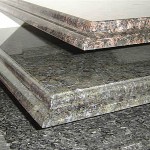 Solid surface counters, like Corian and Earthstone, differ from laminate in that they are one solid piece. Scratches and gouges can be sanded out—so they’re tough and durable. They will crack and scorch if exposed to high heat. Design-savvy tenants love the look of solid surface countertops.
Solid surface counters, like Corian and Earthstone, differ from laminate in that they are one solid piece. Scratches and gouges can be sanded out—so they’re tough and durable. They will crack and scorch if exposed to high heat. Design-savvy tenants love the look of solid surface countertops.
Remember, appealing to your tenants‘ sense of design and style is a great way to help improve your vacancy rate.
Posted by Teresa on September 25, 2010 under Housing Trends | 
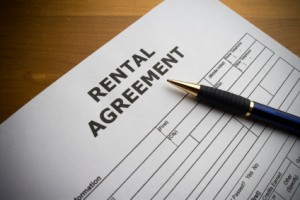 A new survey by Fannie Mae reveals that the goal of home ownership is losing its appeal for Americans. Falling home prices, foreclosure and financial ruin is enough to make the strongest homeownership desire fade, as evidenced by the falling number of people who say they consider housing a safe investment.
A new survey by Fannie Mae reveals that the goal of home ownership is losing its appeal for Americans. Falling home prices, foreclosure and financial ruin is enough to make the strongest homeownership desire fade, as evidenced by the falling number of people who say they consider housing a safe investment.
The percentage of Americans who though of housing as a safe investment was 83% in 2003. But by July of this year, it has fallen to 67%. That’s three points lower than January 2010. And, while more Americans (70% in July vs. 64% in January) believe home prices are nearing the bottom and it’s a good time to buy, the number of households saying they’re more likely to rent than buy rose from 30% in January to 33% in July.
Why Americans are Renting
If home prices are falling and mortgage rates are near 50-year lows, why wouldn’t more people be lining up to buy homes, rather than rent them? First, tighter lending standards. People simply can’t qualify for mortgages like they could in the free-flowing days of the early 2000s. Second, the still-stagnant labor market is keeping people from taking on more debt; those with jobs are paying off debt and tightening up on spending. Third, even if they did qualify for a mortgage, people think they cannot. In fact, more than 50% of renters believe they cannot obtain a mortgage to purchase a home.
Younger people are taking a wait-and-see approach, according to a Wall Street Journal article on the rental market. Where once they might have purchased a condo, they are renting for the long-term foreseeable future. They’ve seen friends become “stuck” owning homes they cannot sell, unable to move and take advantage of job opportunities. And, they see homeownership as an “economic trap.”
Economic analysts say these changing attitudes could lay a “more stable foundation for the housing market,” as Americans see homes as a durable good, like a car, and not an investment. And it’s good news for landlords, who could be enjoying lower vacancy rates in the future!
Posted by Teresa on August 31, 2010 under Housing Trends, Landlord Tips | 
 Landlords looking for good news, read on:
Landlords looking for good news, read on:
- Rent.com says that only 31% of you are reporting lowering rents this year, compared with 69% just a year ago.
- The National Housing Council reports that vacancy rates are falling throughout the rental market, while demand is increasing.
- According to a study by MPF Research, which analyzes apartment trends, June vacancy rates averaged 6.6% at the end of 2009 in the largest 64 markets in the U.S.
- The U.S. Census Bureau’s vacancy figures, which include apartments and single family units were 10.6% in the second quarter of 2010—down from 10.7 in the fourth quarter 2009 and 11.1% in Q3 2009.
As units fill, rental property owners become more confident—and less likely to negotiate or reduce rents. Also becoming a thing of the past are the incentives many landlords initiated to fill vacancies—like large-screen TVs, free cable to go with them, and free rent offers.
Rent.com’s survey of rental property owners in June and July revealed that 56% of respondents said the number of vacancies dropped or remained steady from the previous year—good news in an economy which has not seen significant employment growth. Strength of local economies, not reflected in national reports, is given as one reason for increased demand for rental housing. Even small upticks mean people are more willing to sign leases, or parents are more willing to co-sign a child’s lease.
Another factor affecting rental demand is the continued weakness in the housing market. Homeownership fell in the second quarter to 66.9%–that’s the lowest it’s been since 1999. Financing difficulties and plummeting values continue to fuel the rental market.
Rental property owners, keep your eyes on both national and local vacancy rates and market rents, and react accordingly. Keeping up with data means you won’t make the mistake of undercharging on rent because you didn’t realize your market had improved!
Pre-screen all tenants as part of your standard application process. Background and credit checks will help ensure you rent to qualified tenants. For more landlord resources, including forms and information on tenant screening, turn to E-Renter.com.
Posted by Teresa on August 20, 2010 under Housing Trends | 
 The cost of tuition is bad enough at colleges and universities; but did you know room and board averages nearly $8,600 at private schools and over $7,000 at public schools? Parents are increasingly looking at purchasing investment property for their kids to live in, and then to rent when the child graduates.
The cost of tuition is bad enough at colleges and universities; but did you know room and board averages nearly $8,600 at private schools and over $7,000 at public schools? Parents are increasingly looking at purchasing investment property for their kids to live in, and then to rent when the child graduates.
There are several advantages to this option:
1. Purchasing offers tax benefits that are not available when paying college room and board. The interest paid on a mortgage is usually tax-deductible; college room and board is not.
2. Owning rental property offers parents additional tax benefits, with deductions for taxes, repairs, upkeep and depreciation. Travel to inspect, purchase and check on the property is also deductible in most cases.
3. Avoiding the housing shortages that many universities are experiencing—along with the steep fees that go with them.
4. Moving a student’s possessions back and forth can be either a time-consuming hassle or a storage nightmare. Keeping it in one place year-round is much more convenient. It can save parents time and money.
5. Whether parents purchase single-family homes, condos or duplexes, there are opportunities to collect rent from other students. A multi-bedroom house means roommates—and rents. A duplex can provide additional income while providing a student a place to live year round.
There are downsides to becoming an absentee landlord, too. All factors must be considered, but owning rental property while the kids are in college is a great choice for many families. Learning all about becoming a landlord is essential, and should include visits to a lawyer and tax advisor. Property buyers should check all the applicable leasing codes in the city and state where the property would be located, and always conduct proper tenant screening on all residents. (You may decide to exempt your own child.)
The contents of this article are intended for general information purposes only, and should not be relied upon as a substitute for obtaining tax advice applicable to your situation.
Posted by Teresa on August 12, 2010 under Housing Trends | 
 Politicians and federal policymakers don’t always agree on how to best serve the U.S. economy and needs of taxpayers. One thing everyone can admit is that Freddie Mac and Fannie Mae nearly collapsed in the recent housing crisis, with a huge loss of taxpayer money.
Politicians and federal policymakers don’t always agree on how to best serve the U.S. economy and needs of taxpayers. One thing everyone can admit is that Freddie Mac and Fannie Mae nearly collapsed in the recent housing crisis, with a huge loss of taxpayer money.
Some critics think an overhaul of the mortgage giants is in order; how long, they ask, can the government sustain guaranteeing 90% of mortgages? Others say the U.S. needs to shift its emphasis away from a goal of “homeownership for all.”
Homeownership in the U.S. fell to its lowest level in 50 years and projections say it could sink even lower. It’s now at 67% and is predicted to drop to 62% between 2012 and 2020, as millions of homeowners lose their homes to foreclosure. Massive government subsidies in the form tax breaks on mortgage interest and avoiding capital gains taxes incentives have not prevented the foreclosures millions of Americans are facing.
Now, government-sponsored home ownership incentives are in question. Some say the policies are outdated and have encouraged overinvestment in housing. The Treasury Department says it’s moving toward big changes—including promoting affordable housing for owners and renters alike. More rental housing assistance for lower-income and senior citizens could be on the way, too.
- Government subsidies for home owners in 2009: $230 billion
- Government subsidies for rental market in 2009: $60 billion
Experts say there are many advantages to renting over homeownership. It’s easier to move in search of work, for example. Right now, many families are “stuck” in homes they cannot sell and therefore cannot take advantage of employment opportunities in other cities or states. The lower cost-of-entry into rental housing allows people to save more money, too. Home ownership is expensive, and not always a wise investment.
Landlords could be seeing more qualified tenants, as rental housing assstance becomes more available to folks who need it.
Posted by Teresa on August 5, 2010 under Housing Trends | 
 Personal finance news site WalletPop.com reports today on the ten worst places to live in the U.S., based on (among other factors) the unemployment rate, climate, health data, crime rate and number of foreclosures.
Personal finance news site WalletPop.com reports today on the ten worst places to live in the U.S., based on (among other factors) the unemployment rate, climate, health data, crime rate and number of foreclosures.
And recently, DailyFinance.com shared how 24/7 Wall St. combined unemployment rates with foreclosure figures for the first half of 2010 to come up with the ten worst real estate markets in America.
How do the two lists compare? As expected, California has a number of entries on the “worst real estate market” list, but only two for the worst place to live list—taking the number one and number six spots.
In this town, even the cemetery is bankrupt
At the top of the “you don’t want to live here” list is El Centro , CA, because it has the highest unemployment rate in the country—at 27.5%, it’s just ahead of Yuma, AZ. Of course, the city’s location just over the Mexican border means the unemployed are mostly field laborers, with fluctuating employment rates typical for that sector.
Los Angeles made the list because of its terrible pollution, but is cited for its awful traffic problems too. Perhaps the two are related?
On the top ten worst real estate markets, California can boast numbers three through seven, with Modesto, Merced, Riverside, Stockton and Vellejo, respectively. But that’s not all—Bakersfield takes the number nine spot, too. Yes, California is a mess, with state budget cuts helping to drive unemployment rates in these cities to between 15.7% and 17.3%.
What doesn’t happen in Vegas? Jobs!
Las Vegas also shows up on both lists: it’s number one for worst real estate market, and number four for worst city to live. With neighborhoods standing completely empty and a 12% foreclosure rate for 2009, home prices continue to fall. Paired with an unemployment rate of 14.5 %, there’s not much happiness going around in Vegas.
Over on the east coast, Florida is represented on both lists; with Miami number nine in worst places to live; Cape Coral-Fort Myers and Port St. Lucie showing up as numbers two and ten for worst housing markets. Miami is right behind Detroit on Children’s Health magazine as worst place to raise a family, due to crime, education, economics, cultural attractions and health issues. On top of that, there have been nearly 40,000 foreclosures in Miami. Just up the road, Port St. Lucie’s high unemployment rate at 13.4% and foreclosures at 3.05% make for one tough real estate market.
Lists like these can work to a real estate investor’s advantage. Some experienced landlords (with nerves of steel) have experienced success by purchasing investment property in down markets. Reports of $10,000 homes in Detroit, MI (number three on the list of worst places to live) are common. And as the auto industry begins its rebound, the up-and-down cycle could be turning up again. Smart investors tread carefully into depressed markets, with eyes wide open, looking for deals.
 Short-term leases are becoming more popular in some areas of the country. One trend is that homeowners who sell a home are less willing to buy right away, so while they wait and see what the market will bring, they rent for a while. Another factor is the toll the economic crisis took on renters’ credit scores. Landlords are less willing to take chances on one-year leases, so often a month-to month or six-month lease is a great option.
Short-term leases are becoming more popular in some areas of the country. One trend is that homeowners who sell a home are less willing to buy right away, so while they wait and see what the market will bring, they rent for a while. Another factor is the toll the economic crisis took on renters’ credit scores. Landlords are less willing to take chances on one-year leases, so often a month-to month or six-month lease is a great option.










